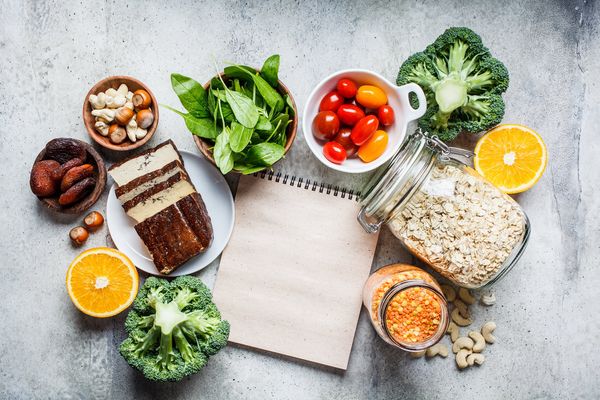Iron on a plant-based diet is an interesting topic; it's seen as another struggle for those who eat plant-based.
The reality is that – with a little bit of knowledge – iron is easy to get more than enough of while eating a diet rich in plant foods.
What is iron and how much do we need on a daily basis?
Iron is a vital mineral for optimal human function, as it is responsible for making haemoglobin which transports oxygen in the blood.
It's also the most common nutrient deficiency in the world - regardless of whether you are adopting a plant-based or animal-based diet.
Iron requirements differ depending on what stage of life you are at, as outlined by this table from the Association of UK Dieticians:

Heme Iron and Non-Heme Iron
Dietary iron comes in two forms; heme-iron and non-heme iron.
Animal products are composed of around 40% heme iron and 60% non-heme iron, and plant-foods are compiled of 100% non-heme iron.
Heme iron is widely known to be absorbed better by the human body, with around 15% - 35% bioavailability.
Non-heme iron, on the other hand, is a different proposition.
The absorption of non-heme iron may be impacted by compounds in plant foods including phytates, oxalates and nutrients such as calcium, and the percentage of absorption can be around 2% - 20%.
Despite heme iron's superior absorption, there are factors that you want to think about.
As it is so readily available, it will continue to be absorbed when consumed, even if our iron levels are within the optimal range. This could be problematic.
This was highlighted by a meta-analysis of 8 studies that showed that there is a positive link between heme-iron intake and an increased risk of colorectal cancer.
This is due to something called endogenous n-nitrosation in the intestinal tract from consumption of heme iron - something which you can read about in more detail here.
The benefits of eating plant-based iron sources are also demonstrated by the fact that the fibre and antioxidant content is much higher than when eating heme iron from meat.

Plant-based sources of iron - and how to optimise absorption
So which plant-foods are rich in iron?
We're talking lentils, chickpeas, soy products such as soybeans, tofu and tempeh, sesame seeds, dark leafy greens, oatmeal, pinto beans and dried fruit such as apricots to name a few.
As I mentioned, absorption rates of non-heme iron can be an issue...however there is a way to optimise this!
By combining plant-based sources iron with foods rich in ascorbic acid - in other words Vitamin C - you will ensure that absorption of iron from plant-sources remains on point.
Foods rich in Vitamin C include citrus fruits, red, yellow and green peppers, kiwi, sweet potato. So some combination examples could include:
- eating your spinach and kale with some bell peppers
- drizzling some lemon juice onto your oatmeal or overnight oats
- packing your tempeh or tofu buddha bowls with some broccoli
So it's clear that you can easily meet your iron needs while on a plant-based diet.
With a little bit of knowledge of the power of Vitamin C here, you'll be set to maximise your absorption.
If you're in doubt, it would be best get your blood tested using a home testing kit - Thriva and Randox are great UK-based options, and Inside Tracker is a great US-based option (no affiliations) – and see where your levels are at.
Stay healthy,
Jeff
